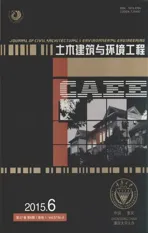结构消(耗)能元件芯材SN490B本构关系数值模拟
2015-02-18柳晓晨,王元清,戴国欣等
结构消(耗)能元件芯材SN490B本构关系数值模拟

柳晓晨1,2,王元清1,戴国欣2,王佼姣1,石永久1
(1. 清华大学 土木工程安全与耐久教育部重点实验室,土木工程系,北京100084;
2. 重庆大学 山地城镇建设与新技术教育部重点实验室,土木工程学院,重庆400045)
摘要:采用消(耗)能元件的结构在遭受地震作用时,元件芯材首先屈服进入塑性阶段,利用其滞回变形消耗地震输入能量,保护主体结构,元件芯材本构关系的数值模拟是对采用消(耗)能元件结构进行抗震分析与设计的基础。为更真实地模拟结构消(耗)能元件芯材在单调和循环荷载下的本构响应,更准确地对采用消(耗)能元件结构进行结构弹塑性地震响应分析,对常用作消(耗)能元件芯材的日本高延性钢材SN490B的单调、循环加载本构及循环骨架曲线进行了数值模拟,包括:采用Esmaeily-Xiao二次流塑性模型模拟材料在单调荷载作用下弹性段、屈服段、强化段和二次流塑段4个阶段;采用混合强化模型模拟材料循环荷载作用下的本构响应,运用大型通用有限元软件ABAQUS结合数值模拟参数对16种不同循环加载制度下的循环加载试验进行模拟,并与试验结果进行对比;采用Ramberg-Osgood模型、无量纲化的Ramberg-Osgood模型及两段式模型模拟循环骨架曲线。研究结果表明:所采用数学模型可以较好地模拟SN490B钢材单调、循环加载本构响应及循环骨架曲线,数值模拟与试验结果拟合较好。
关键词:SN490B;本构模拟;循环加载;滞回性能;有限元分析
Received:2015-03-24
Foundation item:National Natural Science Foundation of China(No.51038006)
地震造成的灾害首先是建筑物的破坏,耗能减震技术通过在结构中布置消(耗)能元件,当地震作用时,消(耗)能元件作为牺牲构件首先屈服进入塑性阶段,通过滞回耗能,改变能量在结构中的分配,避免结构主体和主要受力构件吸收过多的地震能量而出现严重破坏,实现对结构的保护。消(耗)能元件性能主要取决于用于滞回耗能的元件芯材性能。通常用作元件芯材的钢材主要有低屈服点钢材及高延性钢材,如日本SN系列钢材、LY系列钢材、中国的BLY系列钢材及部分碳素结构钢[1-4]。
针对用作消(耗)能元件芯材钢材的研究主要集中于钢材的制造工艺参数[5-8]、拉伸性能[6、9-12]、滞回性能及低周疲劳性能[12-16],对本构关系的数值模拟研究较少。因此,笔者采用不同的数学模型对常用作消(耗)能元件芯材的日本高延性钢材SN490B的单调、循环加载本构响应及循环骨架曲线进行了数值模拟,并运用大型通用有限元软件ABAQUS结合数值模拟参数模拟16种不同循环加载制度下的循环加载试验,与试验结果进行对比,为采用消(耗)能元件的实际工程抗震分析与设计提供借鉴。
1单调加载本构关系数值模拟
通过调节K1、K2、K3、K4四个参数模拟不同种钢材的力学性能,其数学表达式如式(1)。

(1)
式中:Es为钢材弹性模量、fy为屈服应力、K1为材料强化段起始应变与屈服应变之比、K2为峰值点应变与屈服应变之比、K3为极限应变与屈服应变之比,K4为峰值应力与屈服应力之比。
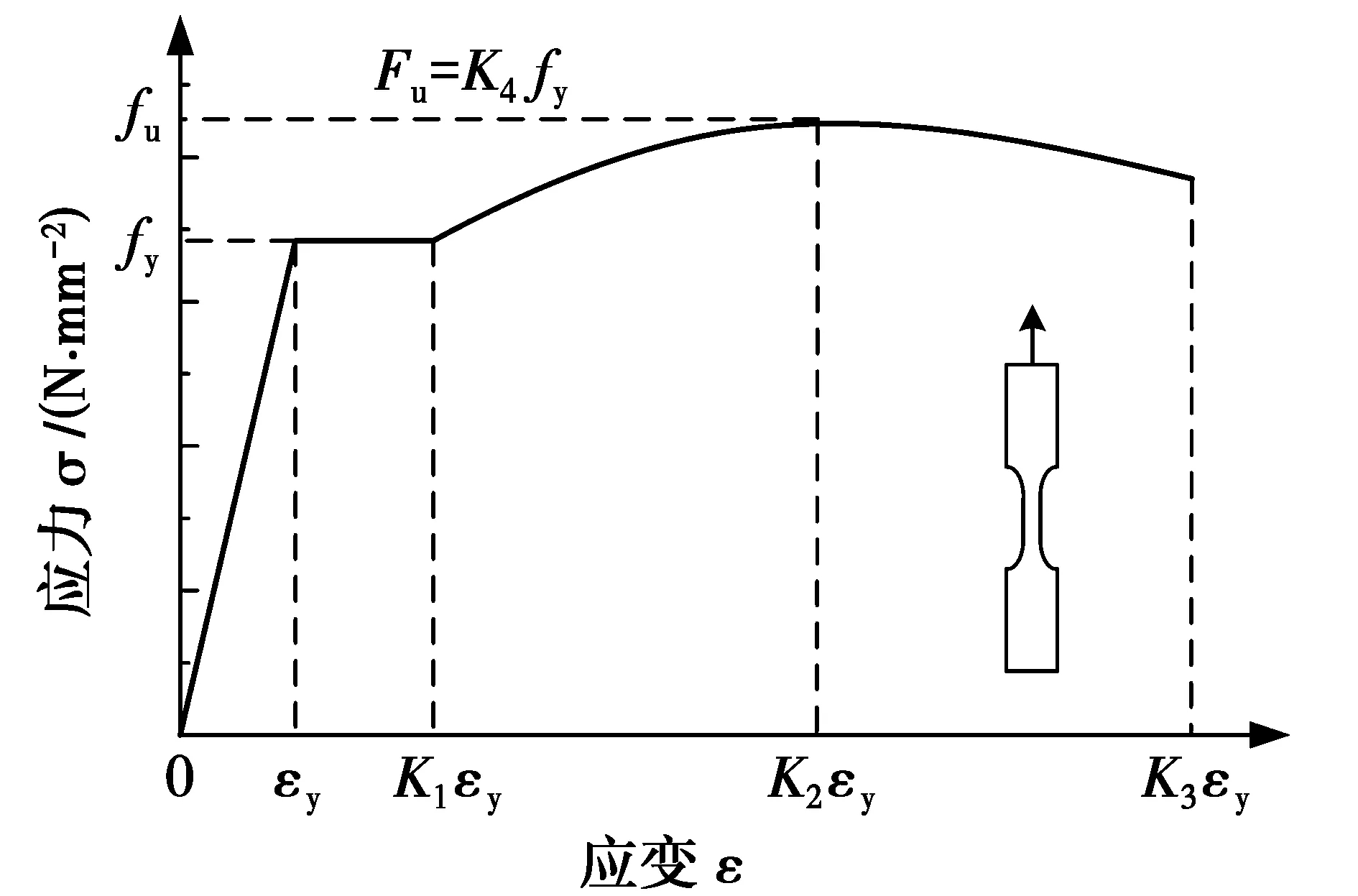
图1 简化后的二次塑流模型Fig.1 The simplified secondary flow plasticity
根据王元清等[4]对SN490B钢材的材性试验数据运用Origin8.5自定义曲线功能进行拟合,整理计算所得模型各参数如表1所示。
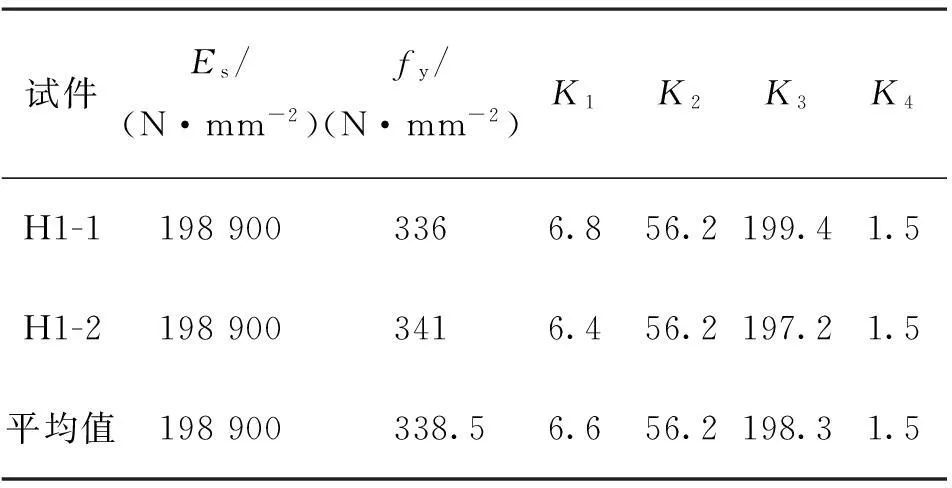
表1 单调加载二次塑流模型参数

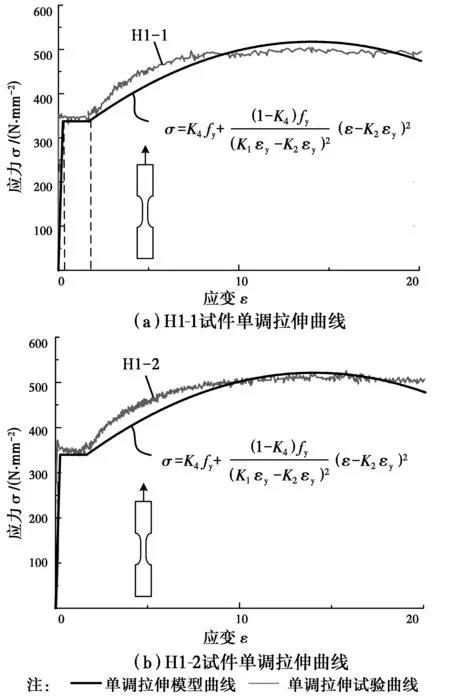
图2 单调加载试验与数值模拟对比曲线Fig.2 Comparison of experimental curves undermonotonic load with the
2循环加载本构关系数值模拟
2.1 数值模型
采用大型通用有限元软件ABAQUS对SN490B钢材循环加载本构响应进行数值模拟,从弹性、塑性两个方面定义材料属性参数。
材料的弹性属性由杨氏弹性模量E和泊松比μ确定。泊松比μ取0.3,弹性模量E根据表1的试验数据取为198 900 N/mm2。
材料在循环荷载作用下的塑性属性采用混合强化模型模拟,混合强化模型由各向同性强化和随动强化两部分构成[18]。描述材料在循环荷载作用下料塑性属性的参数有:等效塑性应变为零时的屈服面等效应力(即材料的屈服强度)ó|0、随动强化参数初值Ck、随动强化参数减小比率γk、屈服面最大变化值Q∞以及硬化参数b。


图3 对称应变循环试验曲线Fig.3 Stress-strain curves under cyclic symmetric strain
(2)
(3)
(4)


表2 循环强化参数

(5)
(6)
(7)

图4 稳定循环曲线Fig.4 Stress-strain curves under steady cyclic
采用上述方法对王元清等[4]对SN490B钢材材性试验加载制度为H7、H8的试验数据进行处理,并运用Origin8.5自定义曲线功能进行拟合,校对和调整后得ABAQUS中cycle hardening中的材料参数如表2所示,运用表2中参数定义材料属性,对试验进行数值模拟,数值曲线与试验数据曲线对比如图7(e)、(f)所示,拟合效果较好。
2.2 有限元模拟
王元清等[4]针对SN490B钢材的循环加载试验试件尺寸如图5所示,试件由固定段、过渡段和试验段3部分构成。在ABAQUS中建立试验段模型即15 mm×15 mm×20 mm的长方体,单元类型采用8节点六面体线性减缩积分单元C3D8R,指定参考点RP(20,7.5,7.5),并将参考点与实体相关联。

图5 SN490B试件尺寸图Fig.5 dimension figure of SN490B
采用表2中的参数分别定义ABAQUS材料属性模块中 Elastic、Plastic和cyclic hardening部分的材料属性参数。在Load功能模块定义边界条件和位移加载过程:将试验段的一端视为固定端Set-1-fixed,另一端进行位移加载Set-2-RP,在Tools-Amplitude-manager中根据图7所示试验实际加载情况定义加载制度。在Job功能模块中提交分析。
2.3 有限元模拟结果
将分析结果绘成应力应变曲线,并与图6所示16种循环加载制度下实际试验数据绘成的应力应变曲线进行比较,比较结果如图7所示。
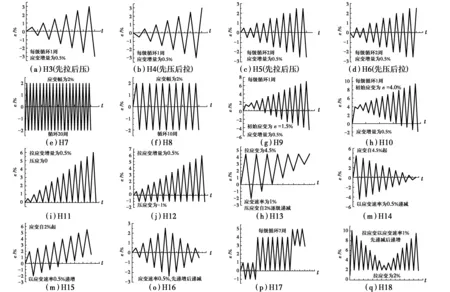
图6 试件编号及加载制度Fig6 Specimen number and cyclic loading

图7 有限元模拟试验结果与实际试验结果应-力应变曲线对比Fig.7 Comparative stress-strain curves of finite element analysis results and experimental results
2.4 循环加载骨架曲线数值模拟

当后续编程开发SN490B材料在单调和循环荷载作用下的滞回规则以形成完整的本构模型用于地震作用结构反应计算、提高计算效率时,材料首次加载按照已经验证过的简化后的二次塑流模型,卸载按弹性直线卸载,再次加载,应力应变关系过屈服点后,沿骨架曲线前进,本文采用式(8)所示变形形式Ramberg-Osgood方程[18]对4种以ε=0为中心对称循环加载的骨架曲线进行拟合。为简化计算,将式(9)带入式(8)进行无量纲化处理得式(10),再对骨架曲线进行拟合。
(8)
(9)
(10)


表3 循环骨架曲线拟合参数
为便于编程及滞回准则的实现,骨架曲线需包含屈服点,因此,进一步采用文献[2]提出的两段式模型对循环骨架曲线进行拟合,拟合后的骨架曲线分为弹性阶段和循环强化阶段,具体表达形式如式(11)。
(11)

图8 循环骨架曲线试验与数值模拟对比曲线Fig8 Comparative analysis of experimental results and cyclic skeleton curves using Ramberg-Osgood model

3结论
通过对常用作消(耗)能元件芯材的日本高延性钢材SN490B的单调、循环加载本构响应及循环骨架曲线的数值模拟及运用有限元软件ABAQUS对16种不同循环加载制度下的循环加载试验的模拟可得以下结论:
1)简化后的二次塑流模型Esmaeily-Xiao模型可以较好的模拟材料在单调荷载作用下的4个阶段:弹性段、屈服段、强化段和二次塑流段。
2)采用随动强化模型模拟材料在循环荷载作用下的响应所得拟合参数,运用大型通用有限元软件ABAQUS对16种不同循环加载制度下的循环加载试验的模拟效果较好,适用于工程实际。
3)无量纲化前后的Ramberg-Osgood方程可以较好地拟合循环骨架曲线,两段式模型拟合后的骨架曲线分为弹性阶段和循环强化阶段,并包含屈服点,便于后续编程及滞回准则的实现。
参考文献:
[1] 柳晓晨,王元清,戴国欣,等.用于结构消(耗)能的高延性钢材性能研究进展[C]//天津:第十三届全国现代结构工程学术研讨会会议论文集,2013:129-137.
Liu X C,Wang Y Q,Dai G X,et al.A review of property of high ductility steel used in energy dissipation structures [C]//Tianjin:Proceedings of the 13th National Conference on Modern Structural Engineering,2013:129-137. (in Chinese)
[2] 石永久,王萌,王元清.结构钢材循环荷载下的本构模型研究[J].工程力学,2012,29(9):92-105.
Shi Y J,Wang M,Wang Y Q.Study on constitutive model of structural steel under cyclic loading [J].Engineering Mechanics,2012,29(9):92-105. (in Chinese)
[3] Shi Y J,Wang M,Wang Y Q.Experimental and constitutive model study of structural steel under cyclic loading [J].Journal of Constructional Steel Research,2011,67(8):1185-1197.
[4] 王元清,柳晓晨,戴国欣,等.循环荷载下SN490B钢材本构关系试验研究[J].建筑结构学报,2014,35(4):142-148.
Wang Y Q,Liu X C,Dai G X,et al.Experimental study on constitutive relation of steel SN490B under cyclic loading [J].Journal of Building Structures,2014,35(4):142-148. (in Chinese)
[5] Yamaguchi T,Okada T,Hasegawa H,et al.Development and commercialization of steels for construction use[J].Nippon Steel Technical Report,1995,66:17.
[6] 王威,吕西林,徐崇恩.低屈服点钢在结构振动与控制中的应用研究[J].结构工程师,2007,23(6):83-93.
Wang W,Lyu X L,Xu C E.Engineering applications of low yield point steel in structural vibration control[J].Structural Engineers,2007,23(6):83-93. (in Chinese)
[7] 宋凤明,温东辉,李自刚,等.低屈服点钢的发展及应用[J].热加工工艺,2008,37(6):85-88.
Song F M,Wen D H,Li Z G,et al.Application and development of low yield point steel [J].Material and Heat Treatment,2008,37(6):85-88. (in Chinese)
[8] 屈朝霞,许磊,温东辉.宝钢低屈服点钢BLY225的焊接性能[J].建筑钢结构进展,2009,11(5):20-24.
Qu Z X,Xu L,Wen D H.Welding properties of BLY225 low yield strength steel development bu baosteel [J].Progress in Steel Building Structures,2009,11(5):20-24. (in Chinese)
[9] Nakashima M,Iwai S,Iwata M,et al.Energy dissipation behaviour of shear panels made of low yield steel [J].Earthquake Engineering & Structural Dynamics,1994,23(12):1299-1313.
[10] Tanemi Y,Toru T,Toshimichi N.Seismic control devices using low-yield-point steel [J].Nippon Steel Technical Report,1998,78:65-72.
[11] Chou C C,Tsai K C.Plasticity‐fibre model for steel triangular plate energy dissipating devices [J].Earthquake Engineering & Structural Dynamics,2002,31(9):1643-1655.
[12] 宋凤明,温东辉,李陈,等.极低屈服点钢低周疲劳特性[J].钢铁研究学报,2010,22(5):37-40.
Song F M,Wen D H,Li C,et al.Low cycle fatigue characteristic of ultra-low yield point steel [J].Journal of Iron and Steel Research,2010,22(5):37-40. (in Chinese)
[13] Saeki E,Sugisawa M,Yamaguchi T,et al.Mechanical properties of low yield point steels [J].Journal of Materials in Civil Engineering,1998,10(3):143-152.
[14] 温东辉,宋凤明.低屈服点钢在建筑抗震设计中的应用[J].宝钢技术,2007(2):9-12.
Wen D H,Song F M.Application of low yield point steel in design of earthquale resitant buildings [J].Bao Steel Technology,2007,(2):9-12. (in Chinese)
[15] 贾明明,张素梅,吕大刚,等.钢材屈服强度对抑制屈曲支撑耗能减振作用的影响[C]//全国结构工程学术会议,武汉,2008:580-586.
Jia M M,Zhang S M,Lyu D G.Influence of steel yielding stength on enegy dissipation and vibration control performence of buckling-restrained braces [C]//Proceedings of the 17th Structural Engineering Academic Conference,Wuhan, 2008:580-586. (in Chinese)
[16] 孙涛.低屈服点钢的动态本构关系及其抗爆吸能性能研究[D].哈尔滨:哈尔滨工业大学,2011.
Sun T.Study of low yield point steel's dynamic constitutive relationship and its performance on explosion enegy absorption[D].Harbin:Harbin Institute of Technology,2011. (in Chinese)
[17] Esmaeily A,Xiao Y.Behavior of reinforced concrete columns under variable axial loads:analysis [J].ACI Structural Journal,2005,102(5):736-744.
[18] ABAQUS.Analysis user's manual I_V [M].Version 6.9, USA:ABAQUS,Inc., Dassault Systèmes, 2009.
[19] Ramberg W,Osgood W R.Description of stress-strain curves by three parameters [R].Washington:National Advisory Committee for Aeronautics,1943:1-22.
(编辑王秀玲)
Author brief:Liu Xiaochen(1990-),main research interest: steel structure,(E-mail)lxc2013210127@163.com.
Numerical simulation of constitutive relation of core material SN490B used in energy dissipation device
Liu Xiaochen1,2, Wang Yuanqing1, Dai Guoxin2, Wang Jiaojiao1, Shi Yongjiu1
(1. Key Laboratory of Civil Engineering Safety and Durability of China Education Ministry; Department of Civil
Engineering, Tsinghua University, Beijing 100084, P.R. China;2. Key Laboratory of New Technology for Construction
of Cities on Mountain Area;School of Civil Engineering, Chongqing University, Chongqing 400045,P.R. China)
Abstract:When structure using energy dissipating device suffers from earthquake, its core materials will first go into the plastic yield stage and consume earthquake input energy by hysteretic deformation to protect the main structure. Therefore, the numerical simulation of core materials constitutive relation is the basis of seismic analysis and design with dissipation device. Theconstitutive relation of energy dissipation device under monotonic loading and cyclic loading elastic-plastic seismic response of the structure with energy dissipation device were investigated in the numerical simulation of monotonic constitutive relation, cyclic constitutive relation and skeleton curve of SN490B steel. The simulations include the four stages which are elastic stage, collapse stage, strain-hardening stage and secondary flow plastic stage of core material using Esmaeily-Xiao secondary flow plasticity model; the constitutive response of core materials under cyclic loading using combined hardening; the skeleton curve using the Ramberg-Osgood model, dimensionless Ramberg-Osgood skeleton curve model and double-linear model. Based on finite element software ABAQUS combined with numerical simulation parameters, numerical simulation of 16 different cyclic loading tests was conducted and compared with the test results. The results show that: mathematical model can be used to simulate the monotonic constitutive response, cyclic constitutive response and cyclic skeleton curve of SN490B steel accurately. Numerical simulation and experimental results fit well.
Key words:SN490B;constitutive relations;cyclic loading;hysteretic behavior;CAE
作者简介:柳晓晨(1990-),女,主要从事钢结构研究,(E-mail)lxc2013210127@163.com。
基金项目:国家自然科学基金(51038006)
收稿日期:2015-03-24
中图分类号:TU511.38;TU502.6
文献标志码:A
文章编号:1674-4764(2015)06-0070-08
doi:10.11835/j.issn.1674-4764.2015.06.010
